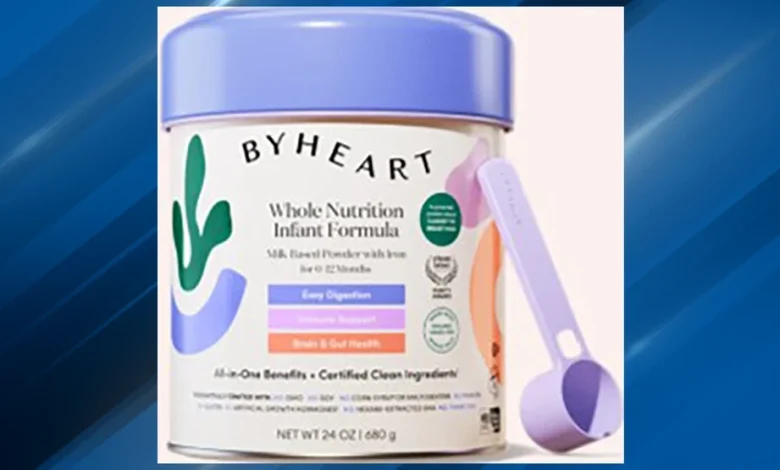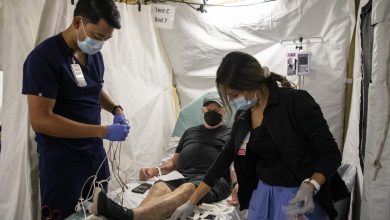Infant Formula Recall Expected After November 2025 Botulism Outbreak

A multistate outbreak of infant botulism detected in late 2025 has triggered urgent public-health action, including a voluntary recall of specific lots of powdered infant formula and a sweeping investigation by federal and state agencies. As of early November, at least 13 infants across 10 U.S. states have been hospitalized with suspected or confirmed infant botulism after consuming ByHeart Whole Nutrition powdered infant formula — prompting ByHeart to recall two lots while the U.S. Food and Drug Administration (FDA) and Centers for Disease Control and Prevention (CDC) work to determine the cause and scope.
What is known so far about the outbreak and recall, reviews how infant botulism develops and is treated, summarizes the public-health and corporate response, and outlines practical guidance for families and health-care providers while testing continues.
What happened — a snapshot of events
Beginning with case reports that stretched back to August 2025, state health authorities noted an increase in infant botulism diagnoses among babies who had consumed a particular brand of powdered formula. Epidemiologic data showed that all 13 infants included in the investigation had consumed ByHeart Whole Nutrition powdered infant formula; eight cases had been confirmed as botulism toxin type A, with testing on remaining cases ongoing. In response, ByHeart initiated a voluntary recall of two specific lots of its Whole Nutrition Infant Formula (lot numbers 206VABP/251261P2 and 206VABP/251131P2), and the FDA and CDC launched an investigation to identify how contamination occurred and whether other products or lots are affected.
The reported illnesses span ten states: Arizona, California, Illinois, Minnesota, New Jersey, Oregon, Pennsylvania, Rhode Island, Texas and Washington. State public-health labs and the national reference laboratory are running tests on retained formula samples and clinical specimens to look for Clostridium botulinum or its toxin. So far, no deaths have been reported in the cluster, but all affected infants were hospitalized.
What is infant botulism and why it’s serious
Infant botulism is a rare — but potentially life-threatening — illness caused by ingestion of spores of Clostridium botulinum, which can germinate in an infant’s immature gut and produce botulinum neurotoxin. The toxin interferes with nerve function, leading to muscle weakness and paralysis that can affect feeding, breathing, and movement. Early signs in babies may include poor feeding, weak cry, constipation, poor head control (floppy appearance), and slowed breathing; respiratory failure is a risk in severe cases. Unlike adult foodborne botulism (where toxin is preformed in food), infant botulism typically results from spores colonizing the intestines and producing toxin internally. Prompt recognition and treatment are essential.
Treatment in infants often involves administration of human-derived botulism immune globulin (BIG-IV), intensive supportive care (including respiratory support if needed), and close nutritional and developmental follow-up; recovery can take weeks to months as nerve terminals regenerate. Public-health management focuses on identifying and removing contaminated products and preventing further exposures.
The recall: what was pulled from shelves and why
On November 8, 2025, ByHeart voluntarily recalled two lots of its Whole Nutrition Infant Formula after epidemiologic links emerged between affected infants and consumption of those lots. The FDA posted the company’s announcement and has been coordinating the recall notice with state partners. Consumers were urged to stop using the specific lot numbers, check lot codes on cans, and follow local guidance for return or disposal. Health agencies have emphasized that testing of samples is still underway and that the recall was initiated out of caution while investigations proceed.
Officials have also advised parents and caregivers to document lot numbers before discarding or returning product, clean and sanitize surfaces and containers that may have been contaminated, and seek medical care if infants show symptoms consistent with botulism. Because spores can survive in the environment and are resistant to typical household disinfectants, public-health teams are providing specific cleaning recommendations where relevant samples were found.
What investigations are trying to find
Public-health investigators have three broad goals:
- Confirm the source — determine whether the contaminated formula lots contain C. botulinum spores or toxin and whether contamination happened during manufacturing, distribution, or at a later point. Preliminary testing from California public-health labs suggested the presence of the bacteria consistent with the toxin identified in cases, but final laboratory confirmation and traceback are ongoing.
- Assess scope — figure out whether the problem is limited to the two recalled lots or if other production lots, product lines, or manufacturing sites could be implicated, and whether other brands or retailers were involved.
- Prevent future cases — identify process failures or environmental sources so regulatory agencies can recommend changes to manufacturing, safety checks, and distribution controls. The FDA routinely inspects manufacturing facilities, reviews quality-control records, and tests retained samples as part of outbreak investigations.
Because infant botulism is rare and powdered infant formula is dry, contamination events are uncommon — but when they occur the consequences for infants can be severe, making fast and thorough investigations essential.
Why powdered formula is a unique risk
Powdered infant formula is not sterile; by regulation and practice, it can contain low levels of bacteria unless sterilized. Historically, powdered formula has been implicated in outbreaks of rare pathogens when production controls fail or when contamination occurs after manufacture. Most powdered formulas sold in retail are safe for the vast majority of infants, but the inherent non-sterile nature of powder, combined with an infant’s immature gut and immune system, makes strict hygiene and manufacturer quality controls especially important. The current outbreak underscores that even small lapses can have outsized effects on vulnerable infants.
Corporate and regulatory responses so far
ByHeart’s voluntary recall and cooperation with federal agencies is standard in such events; the company has posted its recall notice and is coordinating returns and communication to retailers. The FDA has published details of the recall and is conducting an outbreak investigation that includes inspection of manufacturing facilities, review of lot-testing records, and analysis of retained product and environmental samples. The CDC is supporting epidemiologic work and clinical guidance for health-care providers, and state departments of health have issued local advisories and collected samples for testing.
Federal agencies are also emphasizing transparency: they’re releasing interim investigation updates, urging caregivers to check product lot numbers and to seek care for symptomatic infants, and promising to publish final findings when laboratory confirmation and tracebacks are complete. In recent outbreaks of other foodborne illnesses, these coordinated steps have helped narrow the source and prevent additional cases; the same process is now underway.
Practical guidance for parents and caregivers
If you currently use powdered infant formula, here’s what public-health agencies advise:
- Check your cans. Locate the lot number and “use by” date on any ByHeart Whole Nutrition Infant Formula in your home. If it matches the recalled lots (206VABP/251261P2 or 206VABP/251131P2), stop using it immediately and follow the company’s recall-return or disposal instructions.
- Watch your baby closely. Early symptoms of infant botulism include poor feeding, a weak cry, constipation, reduced movement, and a floppy appearance. Seek urgent medical evaluation if you notice any of these signs. Because progression can be slow, parents are advised to be vigilant for weeks after potential exposure.
- Contact your pediatrician. If your infant is symptomatic, call your pediatric provider or local emergency department immediately and mention the potential exposure to recalled formula. Health-care teams may test for botulinum toxin and provide supportive treatment or botulism antitoxin if indicated.
- Follow sanitation guidance. The FDA and state agencies have provided cleaning recommendations for surfaces and feeding equipment potentially exposed to a recalled product — follow those instructions carefully to reduce any lingering risks.
- Consider alternatives if needed. Families who must replace recalled formula should talk with their pediatrician about safe alternative feeding options, including other formula brands or methods to temporarily increase breastfeeding support where feasible. Officials have noted that the recalled product accounted for a small share of national formula sales, but local availability may vary.
Implications for the infant-formula market and public trust
The U.S. infant-formula market is tightly regulated and heavily scrutinized, especially after the 2022 supply disruptions that raised awareness of how sensitive supply chains can be. A contamination-linked recall — even of a small subset of product — can erode parental confidence, prompt retailer removals, and lead to scrutiny of manufacturing practices and regulatory oversight. The FDA’s inspection findings and any root-cause analysis will be closely watched by industry, consumer advocates, and lawmakers.
Manufacturers typically respond by reviewing and strengthening environmental monitoring, sterilization steps, and supplier controls. For smaller companies, the financial and reputational impacts can be significant, while for regulators the incident offers an opportunity to examine whether current standards and inspections sufficiently prevent rare-but-serious events.
What remains unknown (and why patience matters)
At the time of writing, laboratory confirmation that links C. botulinum spores or toxin directly to product samples is pending. Investigations of this type frequently take days to weeks — culturing the bacteria, testing for toxin, and tracing distribution chains is methodical work. Until full confirmation and traceback are completed, investigators cannot definitively say whether contamination occurred during manufacturing, packaging, distribution, or in a downstream step. The agencies have stressed that the recall was precautionary and that they will publish more detailed findings as soon as they are available.
Historical context: outbreaks and lessons learned
Although rare, infant botulism has been associated historically with environmental exposures (for example, honey is a known source of spores and is not recommended for infants under 12 months) and, infrequently, with contaminated powdered products. Prior outbreaks and recalls have produced practical lessons: the critical role of environmental monitoring in manufacturing, the importance of rapid case detection and reporting by clinicians, and the need for clear communication to families to prevent panic while ensuring safety. Public-health agencies have refined protocols for rapid response, and the current investigation will likely feed into future regulatory and manufacturing recommendations.
What clinicians and hospitals are doing
Pediatricians and hospital pediatric infectious-disease teams are on alert for infants presenting with neurologic or feeding symptoms consistent with botulism. Hospitals equipped with pediatric intensive-care units are prepared to provide respiratory and nutritional support, and national treatment guidance for infant botulism (including the use of human-derived immune globulin where appropriate) has been circulated to clinicians. The CDC and state health departments are working to ensure that treatment supplies and consultation resources are available to affected facilities.
Final thoughts: safeguarding infants while facts emerge
An outbreak that affects the most vulnerable population — infants — naturally provokes alarm. The coordinated recall and multi-agency investigation reflect the standard public-health approach: remove implicated products, identify the contamination source, treat affected individuals, and transparently report findings. For families, the best course is pragmatic vigilance: check product lot codes, stop use of recalled lots, watch for symptoms, and contact health-care providers without delay if concerns arise.
Officials have stressed that testing and traceback are in progress and that more definitive answers will come when laboratory findings and facility inspections are complete. Until then, following recall guidance, practicing careful hygiene with feeding equipment, and maintaining communication with pediatric care teams will be the most effective ways to protect infants.




